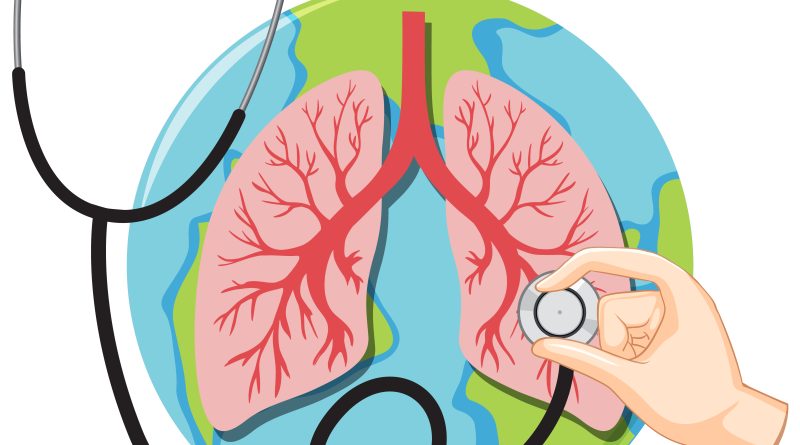From Knock to Cure
With over 45 per cent of global tuberculosis cases and half the world’s TB deaths in 2023, South-East Asia’s battle is both urgent and personal as the region fights to end this epidemic.
By Saima Wazed
Tuberculosis (TB) is more than a health crisis—it’s an economic and social wrecking ball. In South-East Asia, where 30 per cent to 80 per cent of TB-affected households face catastrophic costs, the disease doesn’t just attack the lungs; it empties pockets and shatters futures. In 2023, our region bore a staggering burden: over 45 per cent of the world’s new TB cases and roughly half its estimated 700,000 deaths. India alone reported 25.52 lakh cases—a rise from 24.22 lakh in 2022—according to the Union Ministry of Health and Family Welfare. Yet, amid these grim numbers, glimmers of hope shine through.
TB, caused by the Mycobacterium tuberculosis bacterium, primarily targets the lungs (pulmonary TB) but can strike elsewhere—gastrointestinal tracts, bones, or liver (extrapulmonary TB). Spread through the air via coughs, laughter, or even song, it announces itself with a persistent cough—sometimes bloody—alongside chest pain, fatigue, weight loss, fever, and night sweats. Modern diagnostics like Xpert MTB, RIF Ultra, and Truenat assays can pinpoint it, while treatments—isoniazid, rifampin, ethambutol, pyrazinamide, and streptomycin—offer a cure. The BCG vaccine provides prevention, though drug-resistant TB (DR-TB), unresponsive to standard drugs, complicates the picture.
South-East Asia has fought back valiantly, especially post-COVID-19. In 2023, we notified over 3.8 million new and relapse TB cases—a testament to improved detection. Treatment success hit 89 per cent for those who began therapy in 2022, while missed cases dropped from 44 per cent in 2020 to 22 per cent in 2023. India, the region’s TB epicentre, achieved a 95 per cent treatment initiation rate and a 16 per cent decline in incidence since 2015. Nearly 1.5 million people started preventive treatment last year. Yet, these victories are shadowed by a looming threat: dwindling resources.
The Resource Squeeze
Funding from partners and major donors is drying up just as our countries roll out cutting-edge tools—new diagnostics and shorter, more effective regimens for DR-TB, where treatment success lingers at 65 per cent. India’s public sector handles 67 per cent of case reporting, with the private sector contributing 33 per cent, but scaling up innovation requires cash we can’t spare. Without sustained investment, these advances risk stalling, leaving millions vulnerable.
A Holistic Path Forward
Ending TB demands more than medical breakthroughs—it requires a holistic rethink. Social support for patients—housing, nutrition, financial aid—must complement treatment to ease the crushing burden on families. Siloed efforts won’t suffice. We need robust partnerships with UN agencies, WHO Collaborating Centres, research bodies, and the private sector to pool expertise and resources.
South-South collaboration is a game-changer. Our region brims with talent—India’s diagnostic innovations, Thailand’s community health models, Indonesia’s TB care networks. Sharing these people-centric solutions can amplify access and impact. Imagine a regional hub where technologies are tested, refined, and deployed across borders—turning local ingenuity into global progress.
Communities at the Core
Our greatest asset? The communities we serve. From planning to monitoring TB services, their voices must shape the fight. They can dismantle stigma, combat discrimination, and ensure equitable access—barriers that medicine alone can’t breach. In slums and villages, community leaders and survivors are already proving their worth, bridging gaps that clinics can’t reach.
Why March 24 Matters
World TB Day, observed annually on March 24, marks Dr Robert Koch’s 1882 discovery of the TB bacterium—a breakthrough that ignited hope. In 2025, it’s a clarion call to recommit. The theme, “Yes! We Can End TB: Commit, Invest, Deliver,” isn’t just a slogan—it’s a blueprint. The WHO stands firm in supporting our Member States, but success hinges on collective action.
We’ve slashed incidence and saved millions, yet TB persists. With greater investment, bolder partnerships, and community-driven resolve, South-East Asia can lead the charge to end this epidemic. The tools are here. The will is growing. Now, we must deliver.
(The author is Regional Director for WHO South-East Asia)

